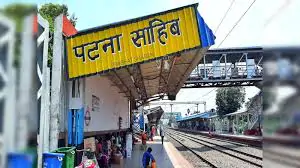The Magnitude of the World’s Largest Railway Network
India boasts the largest railway network globally, an infrastructure marvel that intertwines the nation’s expanse with connectivity and economic vitality. This colossal network spans a staggering distance, rendering it an emblem of modern engineering prowess and historical significance. The Indian railway system’s expansiveness, efficiency, and historical evolution hold substantial weight for aspirants eyeing various government positions, including civil services, police, banking, and railway roles.

Why this News is Important:
Unrivaled National Importance: The Indian railway system embodies a multifaceted significance, serving as a lifeline for transportation and economic activities. Understanding its enormity aids aspirants in comprehending the nation’s infrastructural backbone, crucial for many government exams’ general awareness sections.
Economic and Social Implications: This news delineates how a well-connected railway network propels economic growth, facilitates commerce, and fosters societal integration across diverse regions. Aspirants aiming for civil service roles need to discern the socio-economic implications to grasp holistic governance.
Global Standing and Technological Advancements: For exams concerning technological advancements or global comparisons, recognizing India’s railway network’s prominence elucidates the nation’s standing on the global stage and its strides in technological advancements within infrastructure development.
Historical Context:
The inception of India’s railway network dates back to the British colonial era in the mid-19th century. Its establishment revolutionized transportation, augmenting trade, commerce, and colonial control. Post-independence, the network underwent extensive expansion, modernization, and electrification, further augmenting its utility and significance.
Key Takeaways from “The Magnitude of the World’s Largest Railway Network”:
| Serial Number | Key Takeaway |
|---|---|
| 1. | Indian railway network is the world’s largest. |
| 2. | Economic and social impact on national development. |
| 3. | Historical evolution and colonial legacy. |
| 4. | Technological advancements in railway infrastructure. |
| 5. | Integral for understanding India’s governance. |
Important FAQs for Students from this News
Q: What is the total length covered by India’s railway network?
A: India’s railway network spans over a total length of approximately 68,000 kilometers.
Q: What is the historical significance of India’s railway system?
A: The railway system played a pivotal role in colonial control and post-independence nation-building, fostering economic growth and social integration.
Q: How has the Indian railway system evolved technologically?
A: Over the years, the system has seen significant technological advancements, including modernization, electrification, and the integration of high-speed trains.
Q: What are the economic implications of India’s extensive railway network?
A: The railway network significantly contributes to economic activities, facilitating trade, commerce, and boosting the nation’s overall development.
Q: Why is understanding India’s railway network crucial for aspirants preparing for government exams?
A: Knowledge of the railway system is essential as it embodies various aspects—economic, historical, technological, and governance—which are often tested in government exams.
Some Important Current Affairs Links


















